Abstract
Pigeons' short-term memory for fixed-ratio requirements was assessed using a delayed symbolic matching-to-sample procedure. Different choices were reinforced after fixed-ratio 10 and fixed-ratio 40 requirements, and delays of 0, 5, or 20 s were sometimes placed between sample ratios and choice. All birds made disproportionate numbers of responses to the small-ratio choice alternative when delays were interposed between ratios and choice, and this bias increased as a function of delay. Preference for the small fixed-ratio alternative was also observed on "no-sample" trials, during which the choice alternatives were presented without a prior sample ratio. This "choose-small" bias is analogous to results obtained by Spetch and Wilkie (1983) with event duration as the discriminative stimulus. The choose-small bias was attenuated when the houselight was turned on during delays, but overall accuracy was not influenced systematically by the houselight manipulation.
Full text
PDF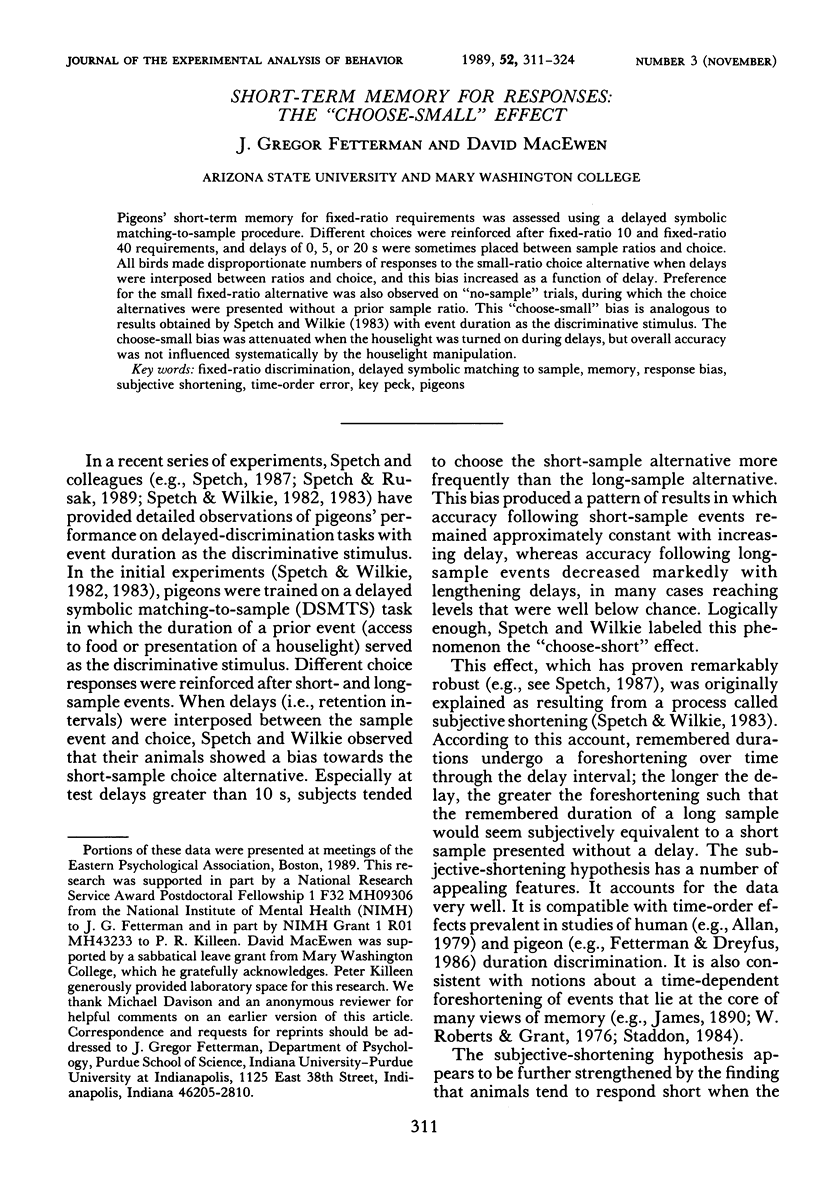
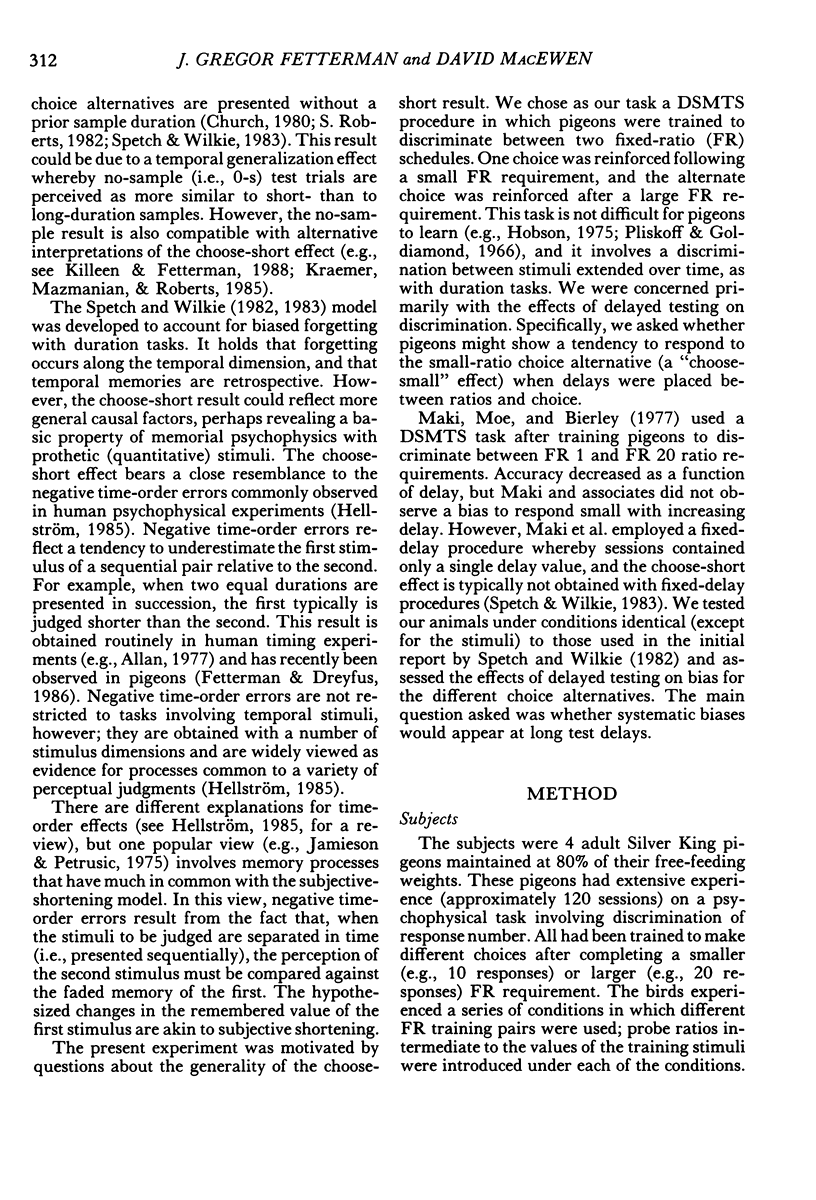
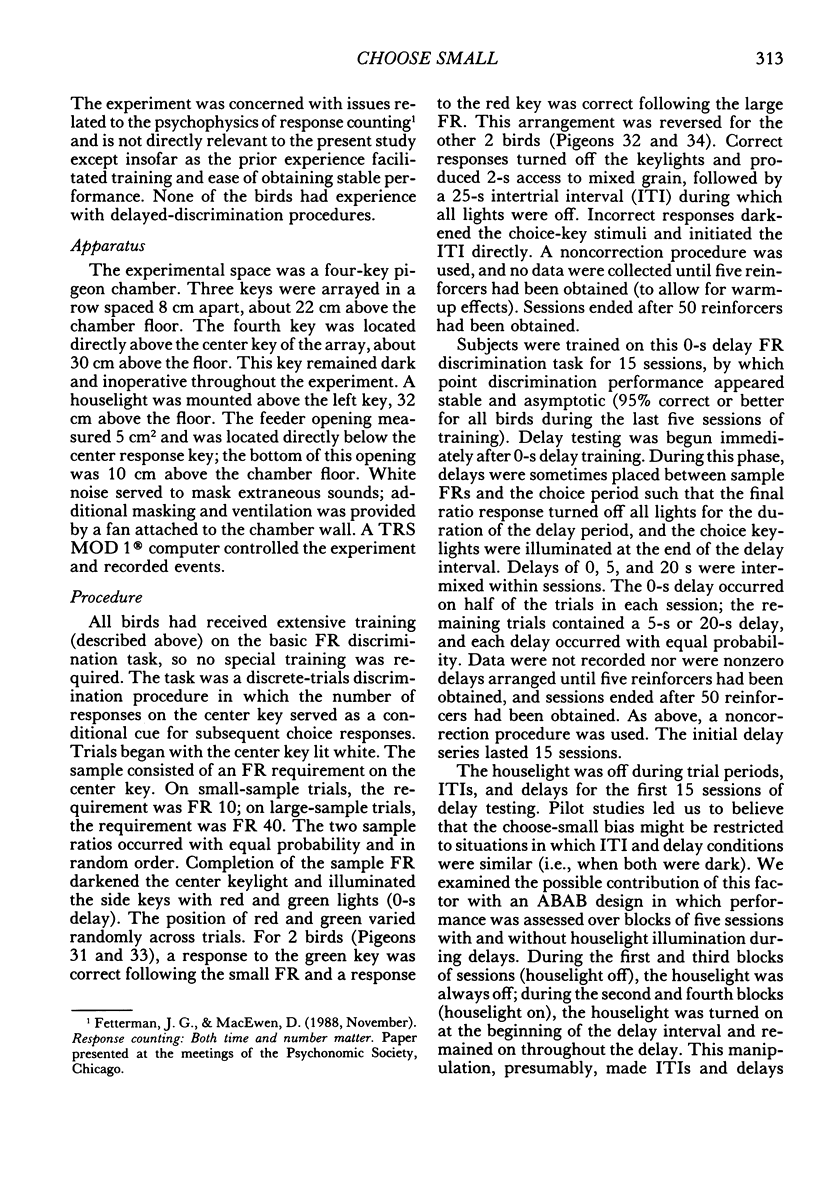
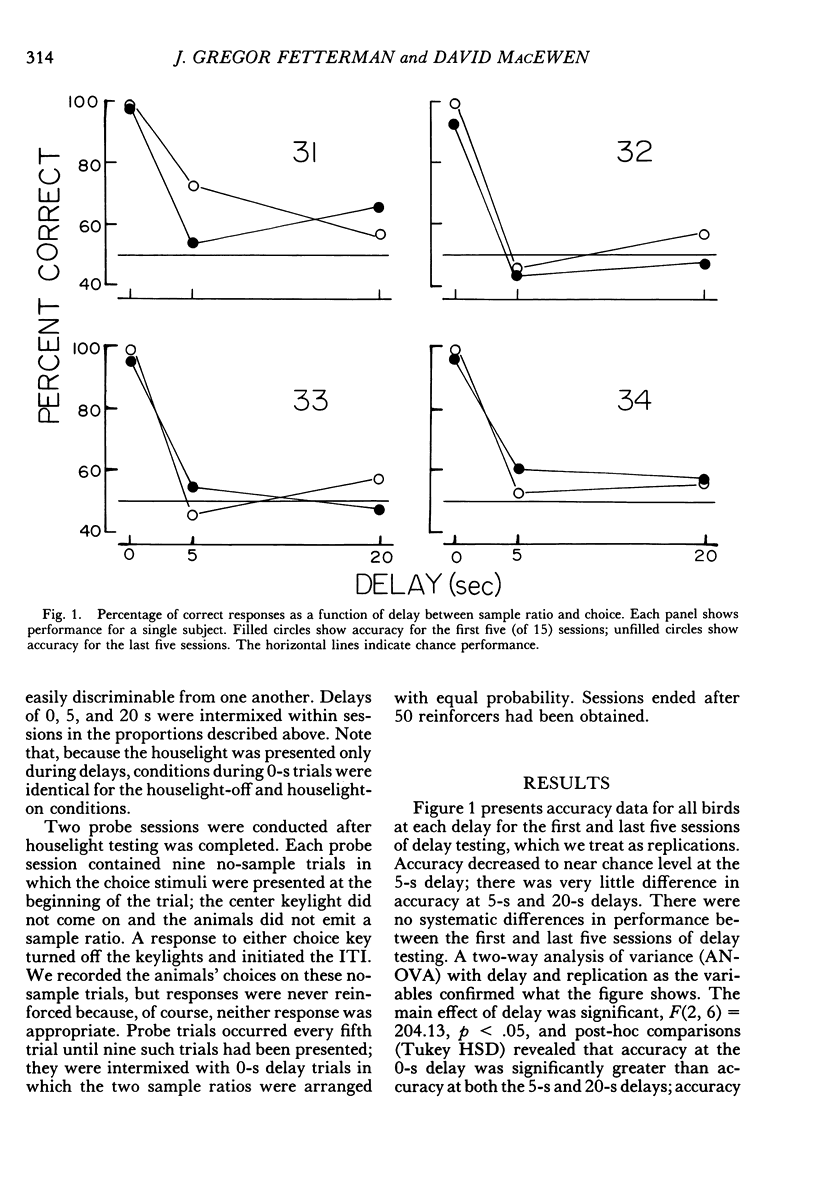
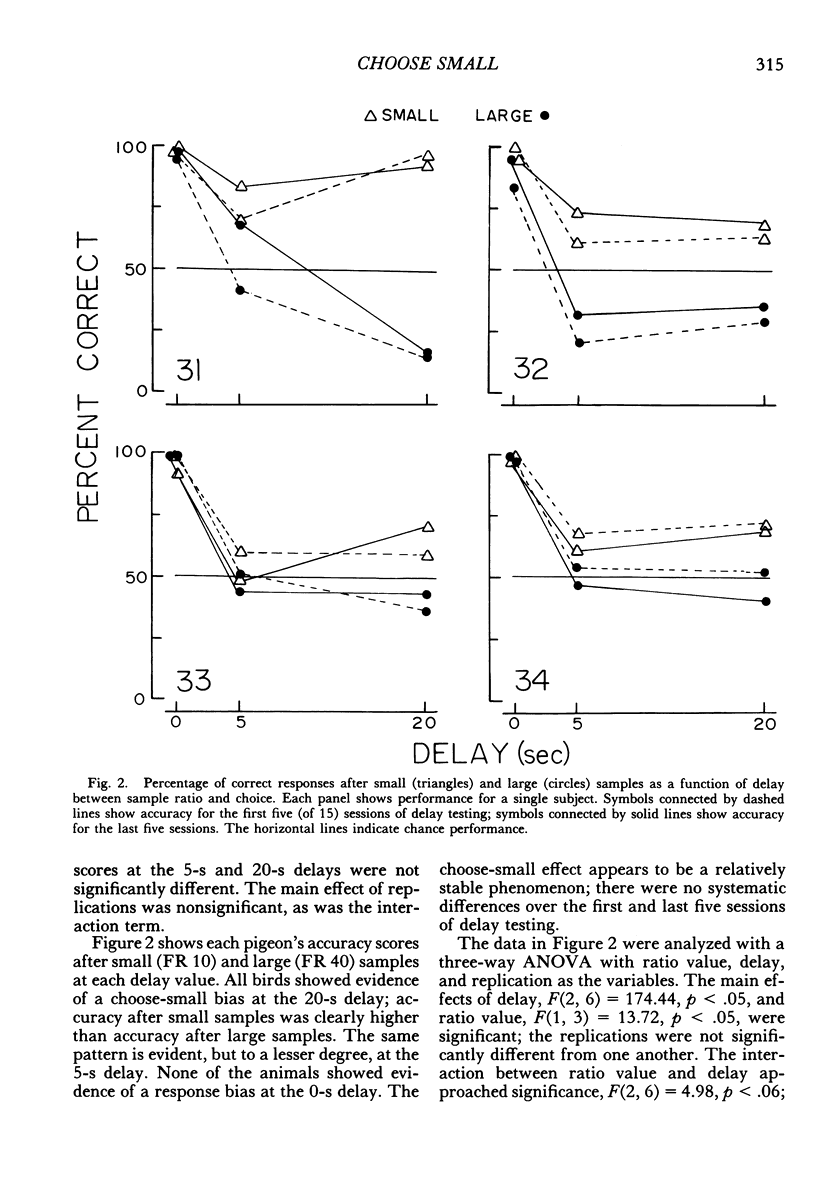
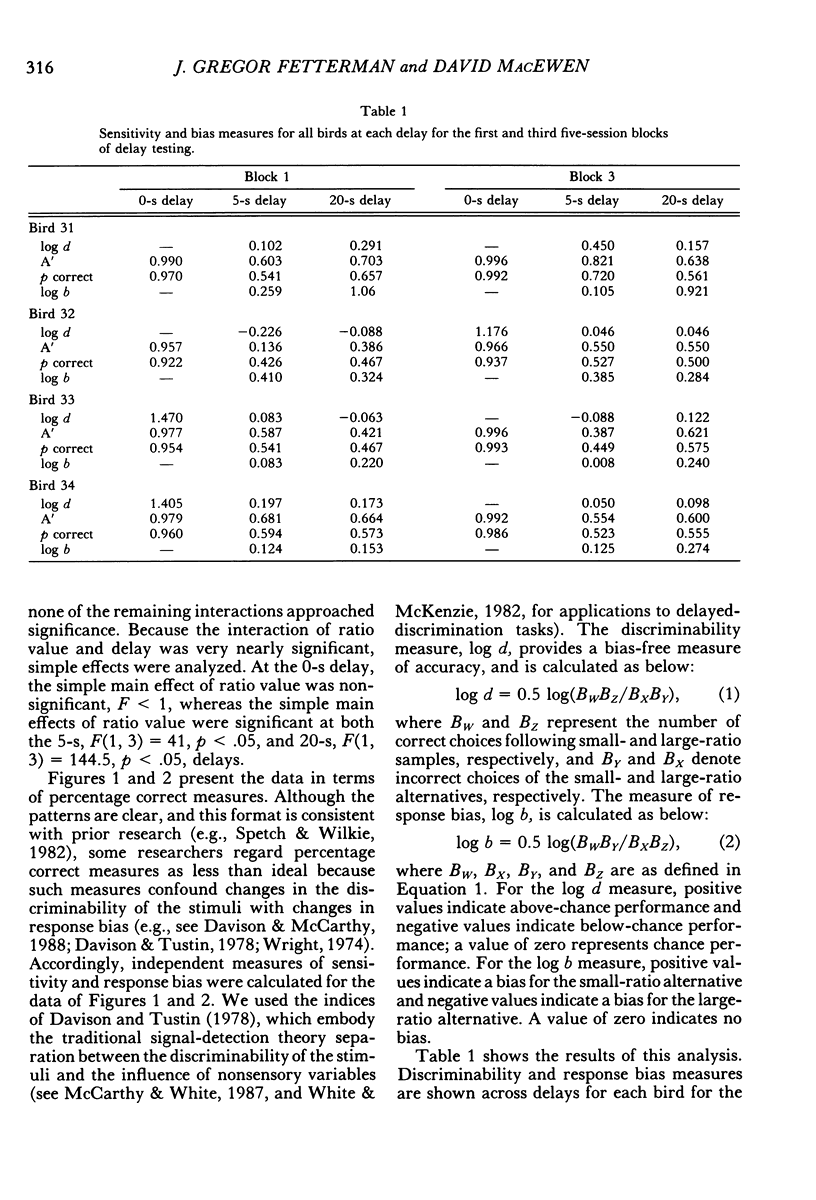
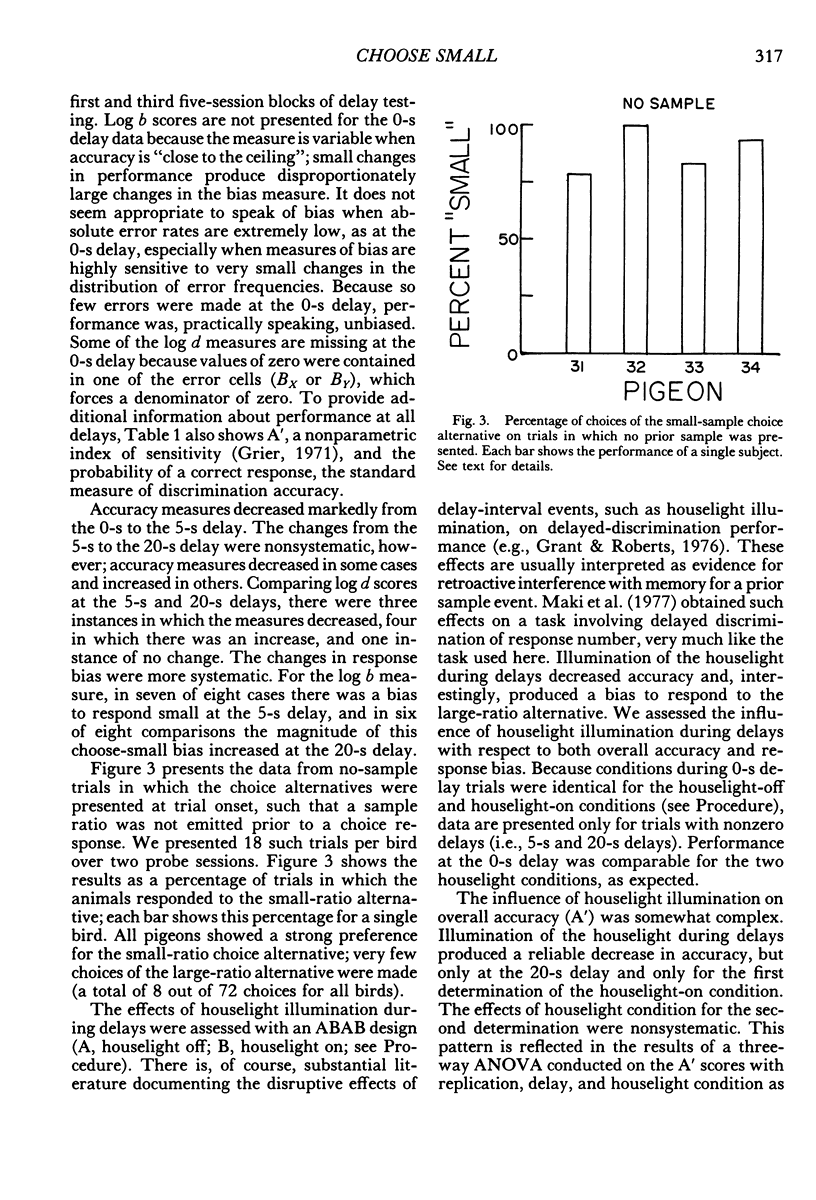
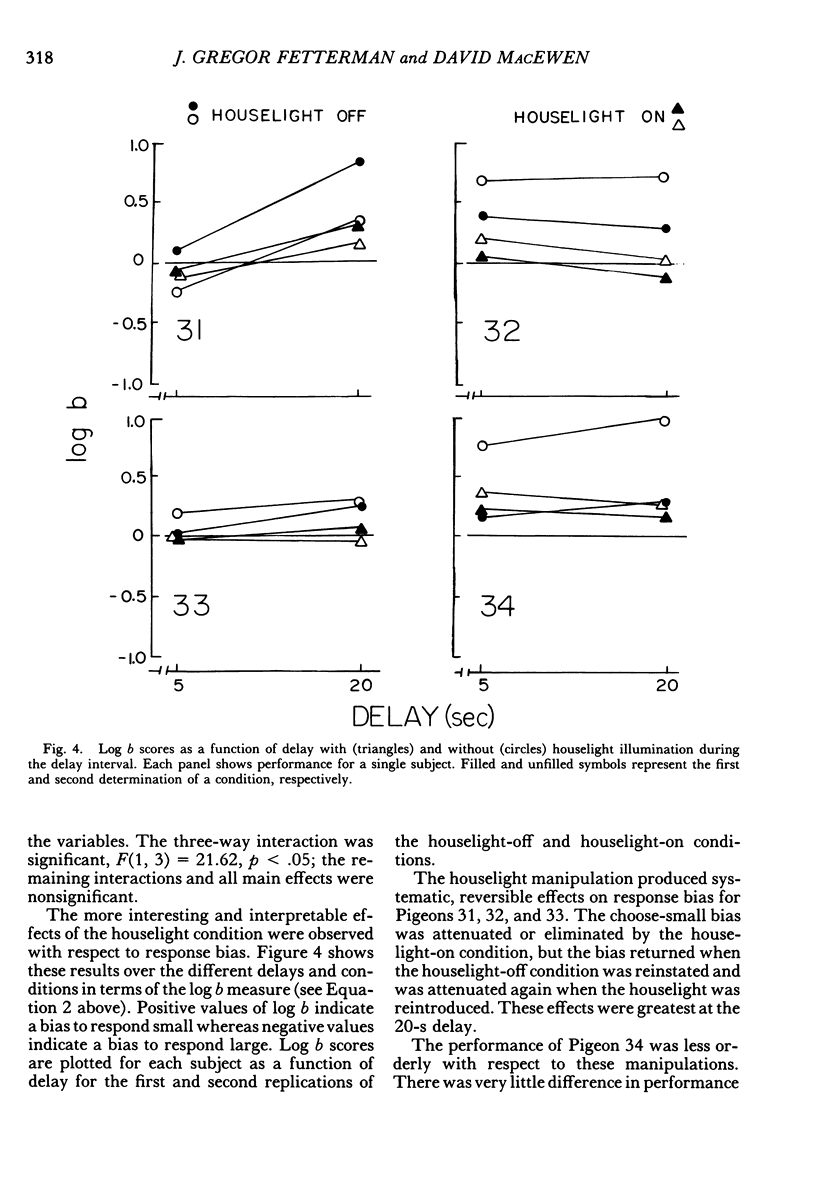
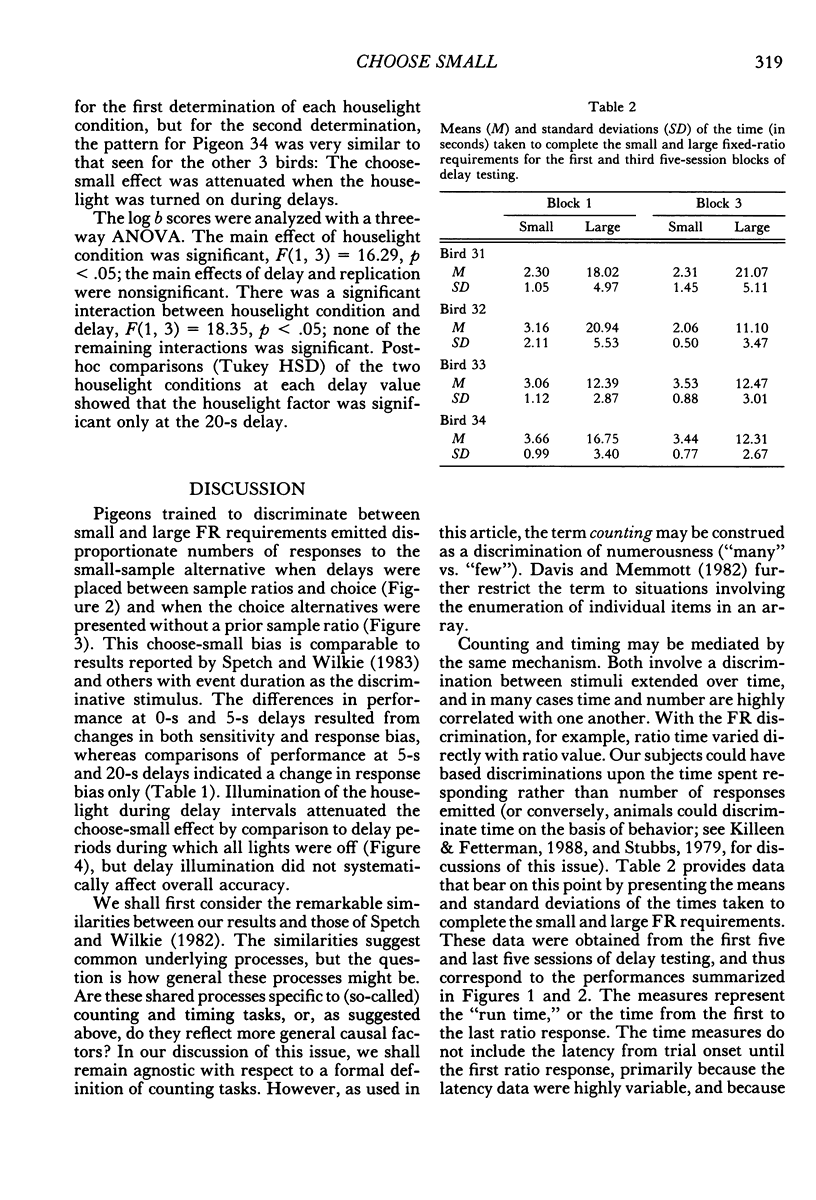
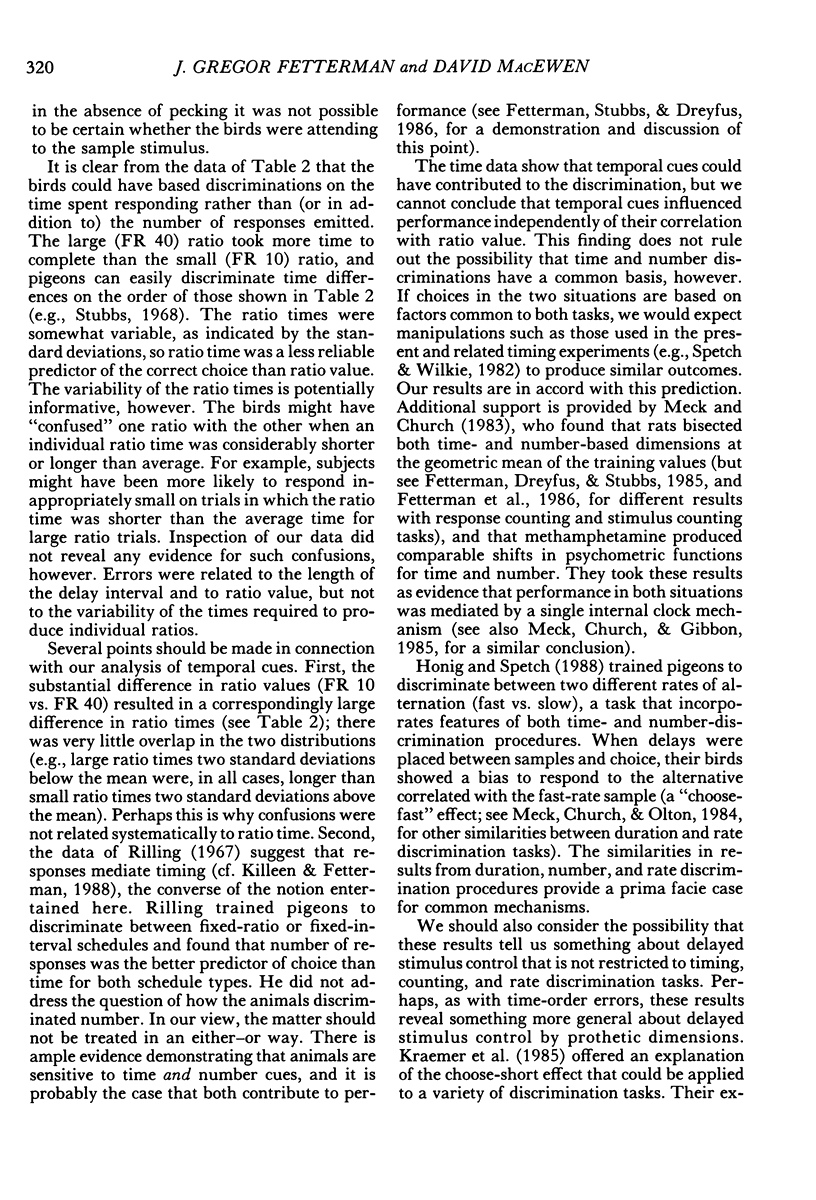
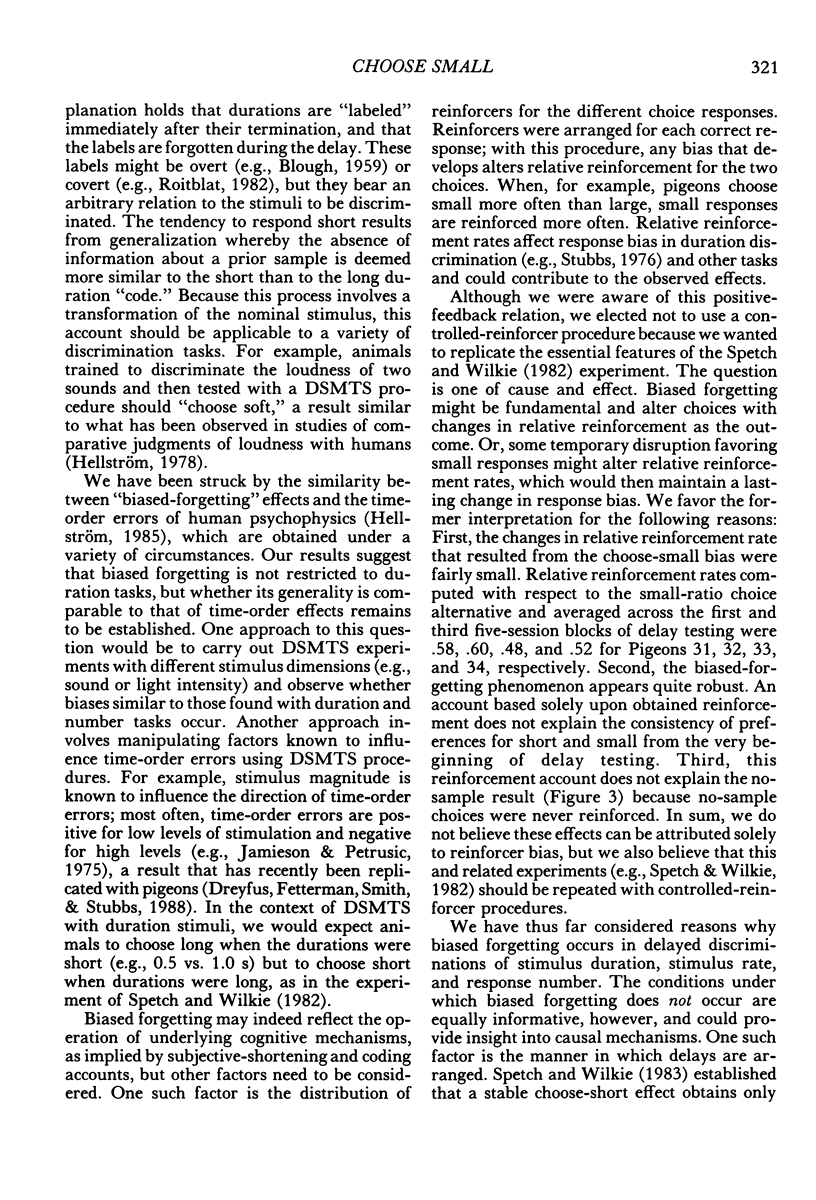
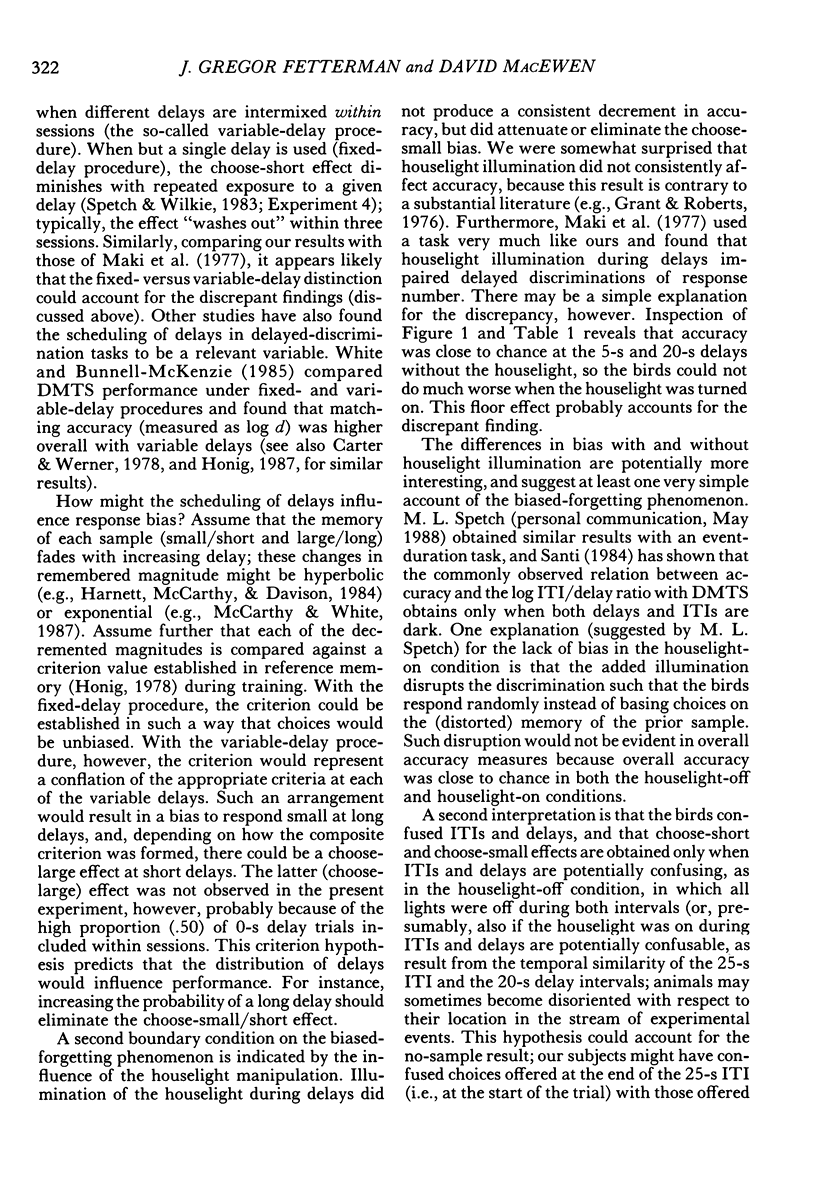
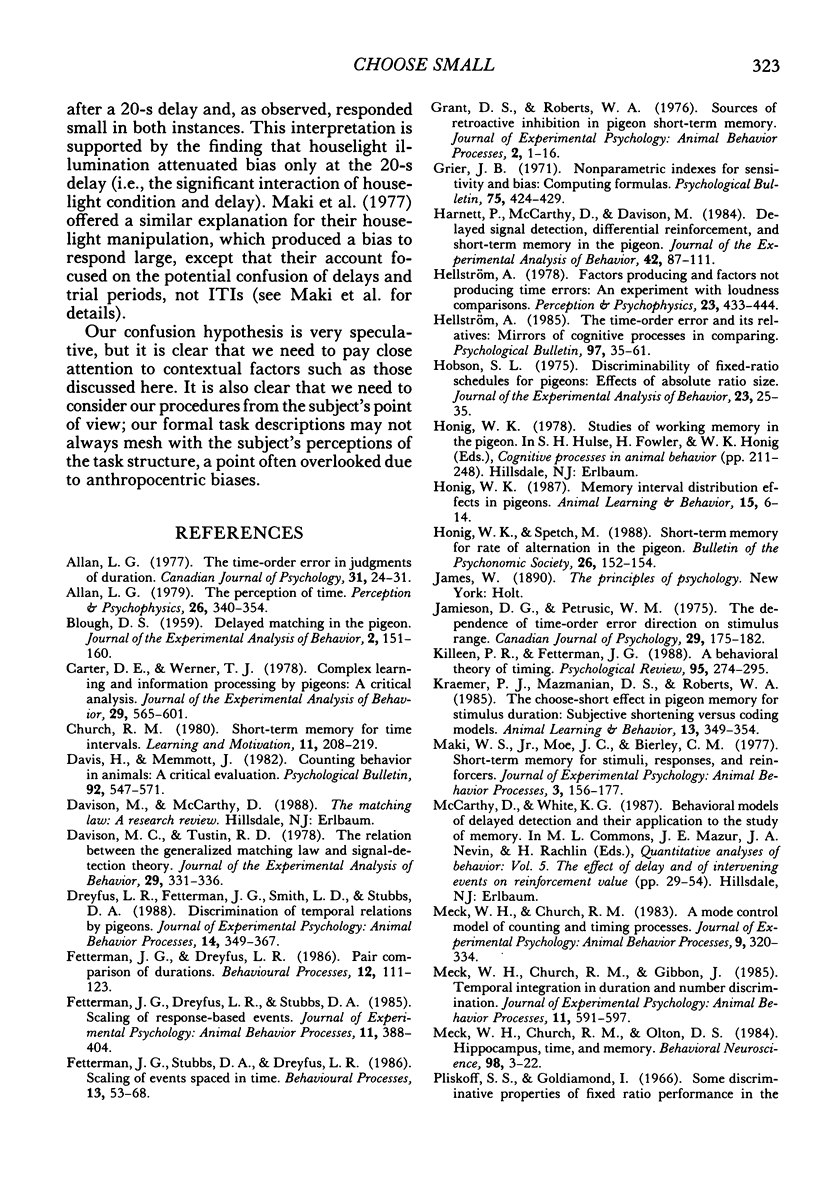
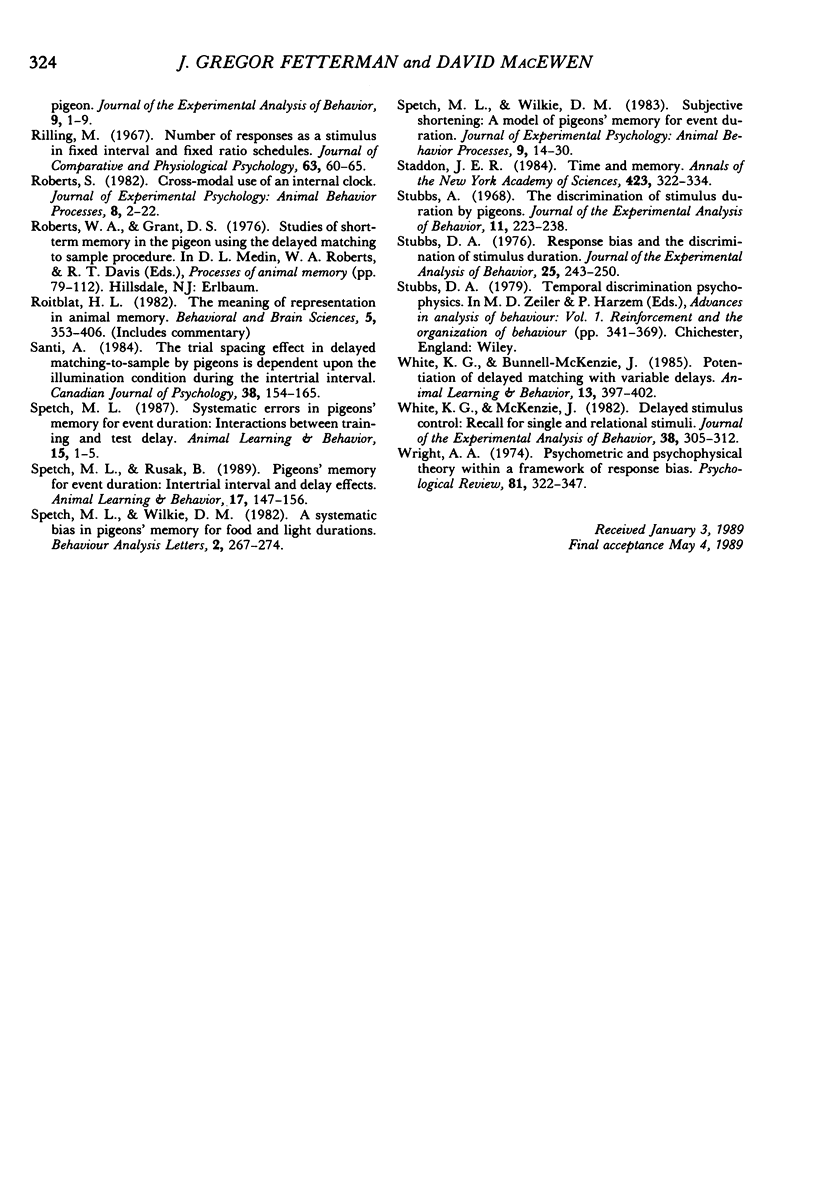
Selected References
These references are in PubMed. This may not be the complete list of references from this article.
- BLOUGH D. S. Delayed matching in the pigeon. J Exp Anal Behav. 1959 Apr;2:151–160. doi: 10.1901/jeab.1959.2-151. [DOI] [PMC free article] [PubMed] [Google Scholar]
- Carter D. E., Werner T. J. Complex learning and information processing by pigeons: a critical analysis. J Exp Anal Behav. 1978 May;29(3):565–601. doi: 10.1901/jeab.1978.29-565. [DOI] [PMC free article] [PubMed] [Google Scholar]
- Davison M. C., Tustin R. D. The relation between the generalized matching law and signal-detection theory. J Exp Anal Behav. 1978 Mar;29(2):331–336. doi: 10.1901/jeab.1978.29-331. [DOI] [PMC free article] [PubMed] [Google Scholar]
- Dreyfus L. R., Fetterman J. G., Smith L. D., Stubbs D. A. Discrimination of temporal relations by pigeons. J Exp Psychol Anim Behav Process. 1988 Oct;14(4):349–367. [PubMed] [Google Scholar]
- Grier J. B. Nonparametric indexes for sensitivity and bias: computing formulas. Psychol Bull. 1971 Jun;75(6):424–429. doi: 10.1037/h0031246. [DOI] [PubMed] [Google Scholar]
- Harnett P., McCarthy D., Davison M. Delayed signal detection, differential reinforcement, and short-term memory in the pigeon. J Exp Anal Behav. 1984 Jul;42(1):87–111. doi: 10.1901/jeab.1984.42-87. [DOI] [PMC free article] [PubMed] [Google Scholar]
- Hobson S. L. Discriminability of fixed-ratio schedules for pigeons: effects of absolute ratio size. J Exp Anal Behav. 1975 Jan;23(1):25–35. doi: 10.1901/jeab.1975.23-25. [DOI] [PMC free article] [PubMed] [Google Scholar]
- Jamieson D. G., Petrusic W. M. The dependence of time-order error direction on stimulus range. Can J Psychol. 1975 Sep;29(3):175–182. doi: 10.1037/h0082023. [DOI] [PubMed] [Google Scholar]
- Killeen P. R., Fetterman J. G. A behavioral theory of timing. Psychol Rev. 1988 Apr;95(2):274–295. doi: 10.1037/0033-295x.95.2.274. [DOI] [PubMed] [Google Scholar]
- Meck W. H., Church R. M. A mode control model of counting and timing processes. J Exp Psychol Anim Behav Process. 1983 Jul;9(3):320–334. [PubMed] [Google Scholar]
- Meck W. H., Church R. M., Gibbon J. Temporal integration in duration and number discrimination. J Exp Psychol Anim Behav Process. 1985 Oct;11(4):591–597. [PubMed] [Google Scholar]
- Meck W. H., Church R. M., Olton D. S. Hippocampus, time, and memory. Behav Neurosci. 1984 Feb;98(1):3–22. doi: 10.1037//0735-7044.98.1.3. [DOI] [PubMed] [Google Scholar]
- Pliskoff S. S., Goldiamond I. Some discriminative properties of fixed ratio performance in the pigeon. J Exp Anal Behav. 1966 Jan;9(1):1–9. doi: 10.1901/jeab.1966.9-1. [DOI] [PMC free article] [PubMed] [Google Scholar]
- Rilling M. Number of responses as a stimulus in fixed interval and fixed ratio schedules. J Comp Physiol Psychol. 1967 Feb;63(1):60–65. doi: 10.1037/h0024164. [DOI] [PubMed] [Google Scholar]
- Staddon J. E. Time and memory. Ann N Y Acad Sci. 1984;423:322–334. doi: 10.1111/j.1749-6632.1984.tb23441.x. [DOI] [PubMed] [Google Scholar]
- Stubbs A. The discrimination of stimulus duration by pigeons. J Exp Anal Behav. 1968 May;11(3):223–238. doi: 10.1901/jeab.1968.11-223. [DOI] [PMC free article] [PubMed] [Google Scholar]
- Stubbs D. A. Response bias and the discrimination of stimulus duration. J Exp Anal Behav. 1976 Mar;25(2):243–250. doi: 10.1901/jeab.1976.25-243. [DOI] [PMC free article] [PubMed] [Google Scholar]
- White K. G., McKenzie J. Delayed stimulus control: recall for single and relational stimuli. J Exp Anal Behav. 1982 Nov;38(3):305–312. doi: 10.1901/jeab.1982.38-305. [DOI] [PMC free article] [PubMed] [Google Scholar]


